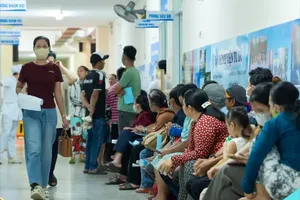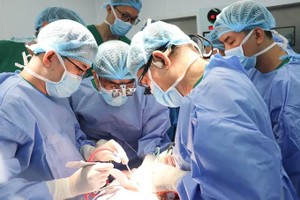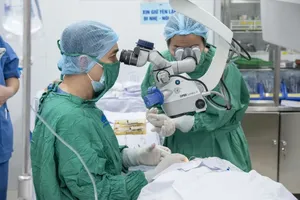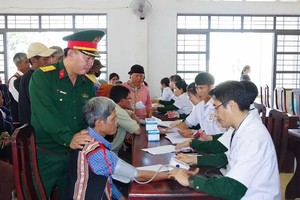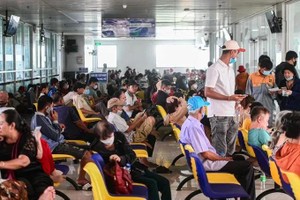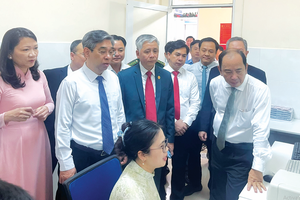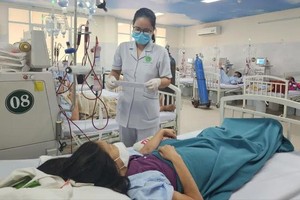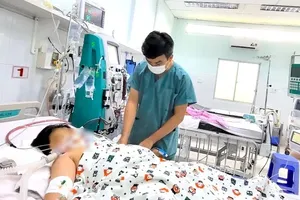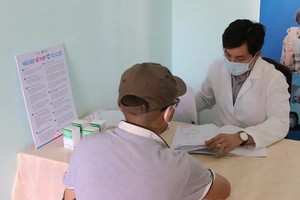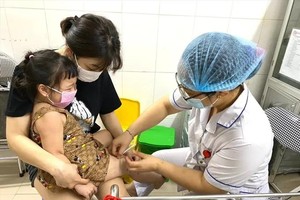Each day, around 60 patients seek dialysis treatment at District 4 Hospital, where they contend with outdated equipment and overcrowded facilities.
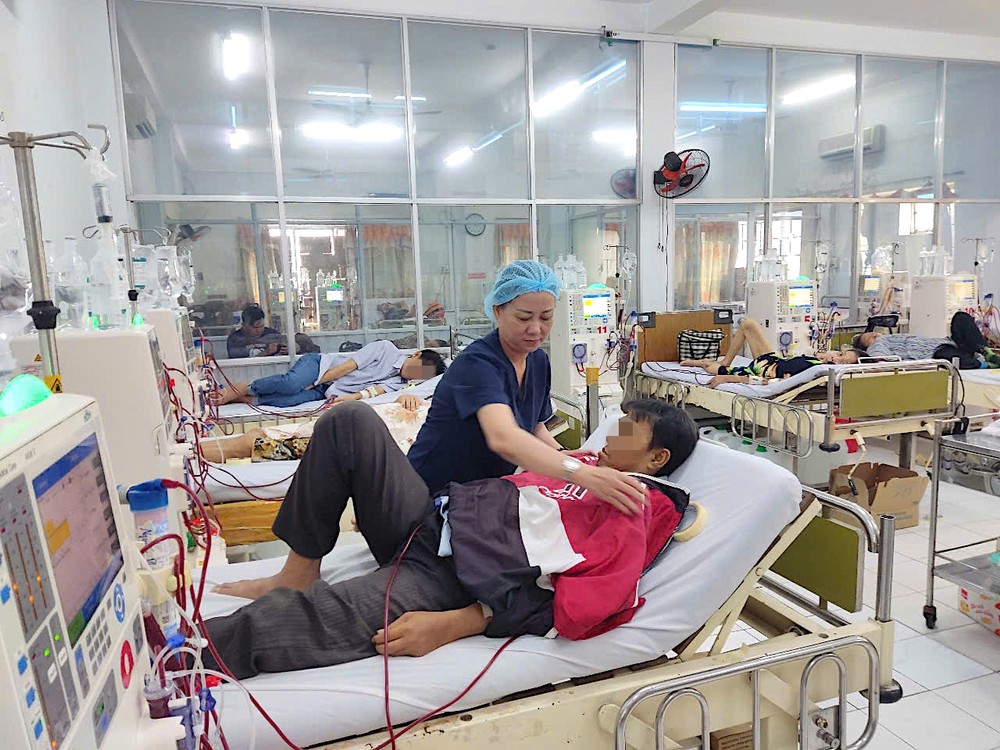
Many district hospitals in Ho Chi Minh City receive thousands of people coming for medical examination and treatment every day, but the facilities are old and degraded, leading to overload. The start dates for some new hospital construction projects remain uncertain due to ongoing delays.
Patients moaned that the slow upgrading of medical examination and treatment facilities causes many difficulties for them.
Phu Nhuan District Hospital at 274 Nguyen Trong Tuyen Street experiences a high volume of vehicles as individuals arrive for medical consultations. The hospital's corridors are less than one meter in width, while the examination and inpatient rooms measure approximately 13 to 15 square meters. Due to the overwhelming number of patients, these rooms are often configured to accommodate three to four beds each.
Additionally, several tiled floors in various rooms exhibit cracks, and the walls show signs of peeling paint and mold. A significant concern is the disorganized electrical wiring system, which poses a considerable risk of safety hazards, particularly in the event of a fire or explosion.
Established in 2007, Phu Nhuan District Hospital occupies a 3,246 square meter site with a three-story structure. However, the hospital's 16 departments and 100 inpatient beds, along with 30 outpatient examination tables, are consistently operating beyond capacity. The existing infrastructure is significantly deteriorated, and the limited space necessitates utilizing a significant portion of the yard for parking, accommodating an average daily influx of 1,500-2,000 patients and their relatives.
Therefore, the People's Committee of Phu Nhuan District has decided to allocate the site at 128 Nguyen Trong Tuyen Street - formerly the premises of Ngo May Secondary School with an area of 993.8 square meters - to build a new facility of the hospital with a total construction floor area of 4,978 square meters and a total project investment of over VND92 billion from the city budget. The project had been approved by the Ho Chi Minh City People's Council, the project implementation period was 2018-2020.
However, the project has encountered the existing regulations impose a maximum construction density of 50 percent and require setbacks ranging from 2 to 6 meters. As a result, the maximum allowable construction area at this location is approximately 439 square meters. This space is insufficient to accommodate a one-way production line that meets health sector standards, which stipulate one floor per examination department. Consequently, the proposed design plan for the expansion of Facility 2 at this site is not feasible.
In response to numerous petitions, the city government approved the construction of Phu Nhuan District Hospital's new facility 2 at 128 Nguyen Trong Tuyen Street. The project timeline has been adjusted to 2023-2025, with a revised budget exceeding VND310 billion inclusive of specialized medical equipment costs.
Elsewhere in the city, Dr. Le Hoang Qui, Deputy Director of Binh Thanh District Hospital, noted that the facility spans 5,407 square meters, with a construction footprint of 2,881 square meters. It is equipped with 100 inpatient beds and serves an average of 4,000 patients daily, with nearly 400,000 individuals initially registered for health insurance at the hospital. Despite maximizing the available space for room renovations, expansions, and the addition of temporary structures, pharmacy areas, and parking facilities, the hospital continues to struggle to meet the healthcare needs of the community.
District 4 Hospital at 63-65 Ben Van Don Street consists of four blocks (A-B-C-D) with a structure of one ground floor and four upper floors. After nearly 25 years of operation, the facility has significantly deteriorated. The tiled floors are warped, walls are leaking, and the patient rooms do not meet standards. There is a lack of essential systems for quality and safety, such as gas supply and fire prevention systems, while the emergency area suffers from dampness and peeling paint both inside and out.
Director of District 4 Hospital Dr. Do Thanh Tuan noted that while the hospital's facade appears well-maintained, the rear shows extensive peeling walls. Consequently, the hospital has had to cordon off the pathway below, and nets have been installed on the patient room balconies to prevent hazards for patients and staff.
To meet the healthcare needs of the local population and ensure a stable working environment for medical staff, the Ho Chi Minh City Department of Health has included the construction of a new District 4 hospital in the public investment project list from 2026-2030.
If approved by the city, the new hospital will cover an area of nearly 3,600 square meters with a total investment of VND790 billion (US$31.14 million) which includes VND600 billion for construction and VND179 billion for medical equipment and supplies.
